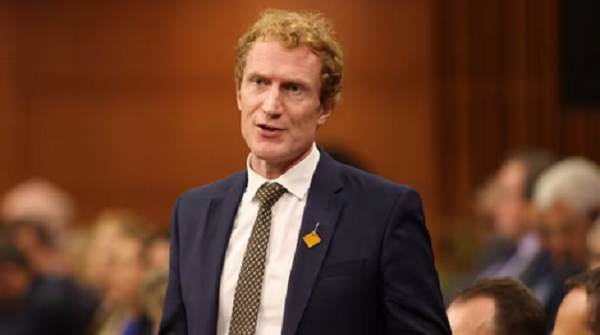Ottawa’s plan to ease housing pressure by cutting immigration will not do as much as expected, watchdog finds
The Trudeau government’s new immigration plan will shrink but not eliminate the housing shortage in Canada, a new report from the Parliamentary Budget Officer estimates.
And in assessing what the cuts to immigration targets introduced by Immigration Minister Marc Miller could mean for Canada’s housing shortage, the report released Friday concludes that the reduction in demand will be significant — but not as great as the government has predicted.
The plan unveiled by Miller last month will reduce the number of new permanent immigrants in each of the next two years by more than 100,000 people from the previous targets.
It also includes a drastic cut in the number of non-permanent residents, including temporary foreign workers and international students. Those reductions are expected to mean there will be fewer households in Canada in 2030 than had been projected; in 2025 and 2026, Canada’s population is projected to actually shrink by 0.2 per cent, the first time the country’s population has ever decreased.
Experts have said there are multiple causes to Canada’s housing crisis, which has seen prices more than double since 2015.
A report published in April by RBC Economics pointed to a slew of factors, including fluctuating interest rates, limited housing stock, and a “flood in immigration” in recent years.
Under the previous immigration targets, the PBO estimated Canada would need to build 436,000 new homes every year between 2024 and 2030 to bring vacancy rates back to historic levels and make housing more affordable.
That number of housing starts would be nearly twice what Canada has recently achieved. However, with fewer people now coming to Canada under the revised plan, the housing gap is shrinking.
Earlier this year, the PBO estimated Canada was on the way to being short some 1.2 million homes by 2030, putting upward pressure on housing costs and rents. The PBO now estimates the gap will be 45 per cent less.
“After accounting for the government’s new immigration plan, we estimate Canada’s housing gap in 2030 to be 658,000,” the report said.
When he announced the changes, Miller estimated they would reduce housing demand more significantly, with 670,000 fewer homes needed by 2027. The PBO, by comparison, estimates they will result in just 534,000 fewer homes needed by 2030. However, it also notes that the government figures may have been calculated using additional immigration data that the PBO wasn’t privy to.
The PBO also sees positives signs in the housing market that could help address the gap. It said new housing starts could average 280,000 new builds a year, which would be higher than the recent Canadian average.
“Our outlook for housing construction has also been revised upward to reflect recent data and the potential impacts of the government’s new housing measures. As such, we assume that over 2025 to 2030, the housing stock will increase on average by 280,000 units annually,” the report said.
The most recent numbers from the Canada Mortgage and Housing Corporation showed about 223,000 new home starts in 2024.
Even with that higher number and a reduction in immigration, Canada would still need 110,000 more housing starts every year until 2030 to fully close the gap.
The PBO identified one major variable in the government’s immigration plan: whether all of the temporary residents now in Canada will leave when their permits expire.
There are currently three million non-permanent residents in Canada on temporary work or student visas. The government’s plan assumes that number will shrink dramatically and that all of those people will leave, the PBO notes.
“The plan assumes that 2.8 million temporary residents will leave the country over the next three years — equivalent to 93 per cent of the current non-permanent resident population,” the report said. “We judge that there is significant risk to the demographic projection presented in the government’s 2025-2027 immigration levels plan — particularly to the projected outflow of non-permanent residents.”
Miller’s press secretary said the government is confident the changes it has introduced will lead to a more sustainable immigration system.
“As we monitor the impact of our policies closely, we are optimistic that all the changes introduced this year will be adequately reflected in the coming months,” Renée Proctor said in an email.
Proctor said immigrants will also be part of the solution to the housing crisis.
“Immigration and newcomers to Canada will continue to have an important role to play in helping us grow the housing supply,” she said. “Immigrants are not to blame for the housing crisis and they, like everyone who lives in Canada whether temporarily or permanently, deserve to be set up for success while they are.”
This article was first reported by The Star












